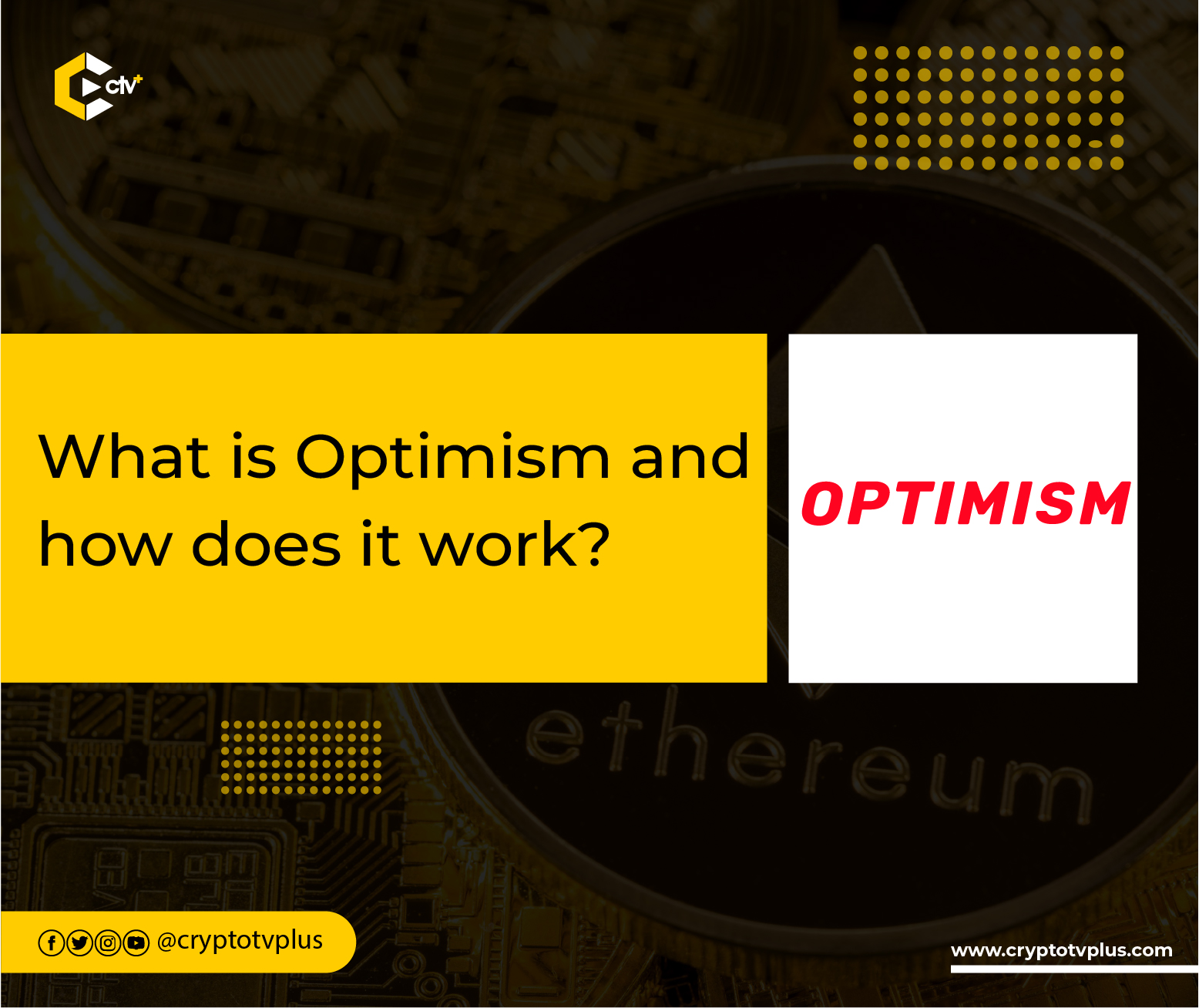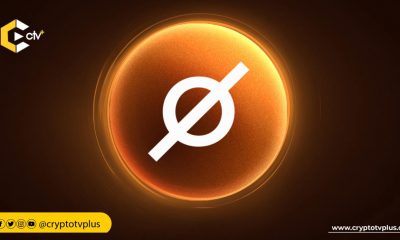Education
What is Optimism and how does it work?

Optimism is an Ethereum Layer 2 scaling solution. It helps solve the problem of scalability and reduces transaction fees on the Ethereum blockchain.
Ethereum is known to be one of the most secure and decentralized blockchains. However, thethe network has been able to scale beyond 30 transactions per second although, ethereum 2.0 promises 100,000 tps on the native layer.
As a result, Ethereum has limitations in the number of transactions it can handle per day. When it reaches its maximum capacity for the transaction, congestion occurs and the network cannot scale anymore.
When the block space gets scarce, users of the Ethereum network tend to enter a war race to get their transaction on the next block. This leads to a rise in the gas price which is sometimes beyond the means of retail users. Aside from the high gas price, users on the Ethereum network also have to wait long hours for their transactions to process.
It is for this problem; the idea of optimism comes into lime. Optimism solves the problem of scalability without affecting decentralization and security.
Basically, optimism performs transactions off of the Ethereum blockchain while leveraging Ethereum infrastructure. Layer 1 handles decentralization, security and data availability, while layer 2 handles scaling. During the transaction, Optimism communicates with Ethereum layer 1 to ensure that layer 1 still offers decentralization and security guarantees.
In a way, optimism absolves some of the transaction burden from the Ethereum blockchain, hence, minimizing network congestion.
How does Optimism work?
Optimism uses rollups to carry out transactions in bunches. This helps to remove network congestion and reduce gas fees. Rollups can help users save up to 100 times the gas fee that would have been used in the Layer 1 protocol.
The roll-up technology optimism operates by combining a series of transactions on Ethereum’s layer 1 into a single transaction. While the rollup is executed on Optimism layer 2, the transaction data is processed on Ethereum’s layer 1.
Optimistic rollups are “optimistic” because every transaction is presumed valid on Optimism’s layer 2. If the system suspects fraud, it does a fraud-proof for verification.
Optimistic rollups and ZK-rollups are the two types of roll-up solutions on Ethereum. While both rollups move the transaction data off-chain to process, the process involved in verifying the transactions is different.
For optimistic rollups, all transactions are assumed as valid, so it doesn’t undergo many computations on layer 2. What it does is move the transaction to layer 1 without verifying it, which leads to a significant increase in scalability. If there is suspicion of fraud in a transaction, the validity of the transaction can be challenged within a week. Then Optimistic roll-ups will run a fraud-proof, which verifies it using data on Layer 1.
While ZK-rollups on the other hand, during any transaction generate a validity proof for each transaction after moving them to layer 2. The validity proof is then moved back to Layer 1 acting as a stand-in for the corresponding transaction. Since validation takes place on Optimism’s Layer 2, it helps to decrease gas prices and validation times on layer 1.
Each of these technologies has its advantages and downsides. For instance, Optimistic rollups are preferred for performing a smart contract, while ZK-rollup is relegated to executing simple transactions. Withdrawal periods are longer for Optimistic rollups, while ZK-rollups have a faster withdrawal policy which makes them conducive for apps that require simple payments.
Optimism and other ETH layer 2 scaling solutions
Computer networks are bound to get congested once they get a lot of traffic, no matter the size of the network. This leads to the idea of different layer 2 networks springing up. Various Layer 2 networks help solve Ethereum’s scalability issue. And optimism happens to be one of such scaling solutions.
There are other scaling solutions as well, some of which are referred to as sidechains because they serve as roads linking to the main Ethereum network.
Below are some of the most popular ETH Layer 2 scaling solutions:
Arbitrum
Arbitrum is an Optimistic roll-up technology much like Optimism. It’s believed that Arbitrum fine-tuned the source code of Optimism to form a distinct layer 2 network.
The main difference between optimism and Arbitrum is the way they handle fraud-proofs. Optimism uses a single round fraud-proof, while Arbitrum uses multiple round fraud-proof. With single-round fraud-proof, optimism carries out instant verification as it relies on Layer 1 to complete the transaction. So, this approach completes transactions quickly, but the consequence is a high gas fee. While multiple round fraud-proof takes time with validation during transactions but this helps reduce gas costs.
Polygon
Polygon is one of those scaling solutions referred to as sidechains. It is a Defi scaling solution. And unlike Optimism which relies on Ethereum’s Layer 1 for transaction security, this scaling solution runs parallel to Layer 1 and has a built-in security framework.
Polygon makes use of the same virtual machine Ethereum uses, so it’s easy to outsource smart contracts to Polygon. Polygon uses Matic tokens to secure its network and pay transaction fees, so users will have to exchange Ether for the protocol’s native MATIC Token.
zkSync
zkSync is a type of ZK-Rollup. “zk” stands for zero-knowledge, which means that one party can prove to another party that it possesses certain information (in this case, transaction details) without revealing the details. To confirm the validity, each transaction is moved to an off-chain prover which generates a cryptographic proof called ZK-SNARK. SNARK stands for Succinct Non-Interactive Argument of Knowledge. The proof generated is thereafter posted on Layer 1.
Optimism and zkSync are closely related but the zkSync method of validating transactions can be somewhat complex. It ensures a higher throughput and lower cost without giving up security. On the downside, ZkSync is not an ideal model for building DApps and the different ZK-Rollup apps cannot interact with themselves on Layer 2.
Conclusion
Optimism made a big move toward decentralization in April 2022 by launching a DAO known as the Optimism Collective. The optimism collective is a unique project that serves as a stepping stone for creating other unique projects that will help fund public goods and govern the protocol. It has the support of a good team, a big community, and a good number of dedicated investors. It also started airdropping newly created OP tokens to Optimism users and others who could help push Optimism’s decentralized future forward.
Read also;
Offchain Labs Acquires Ethereum Consensus Client Prysmatic Labs
What do you think of this article? Share your comments below.

























Pingback: What is Optimism and how does it work? by Micah Bamigboye – CryptoTvplus Events: NFT, DeFi, Bitcoin, Ethereum, Altcoin Events
Pingback: Vitalik Buterin optimistic about EIP-4844, to increase scalability on reduced gas fees | CryptoTvplus: DeFi, NFT, Bitcoin, Ethereum Altcoin, Cryptocurrency & Blockchain News, Interviews, Research, Shows